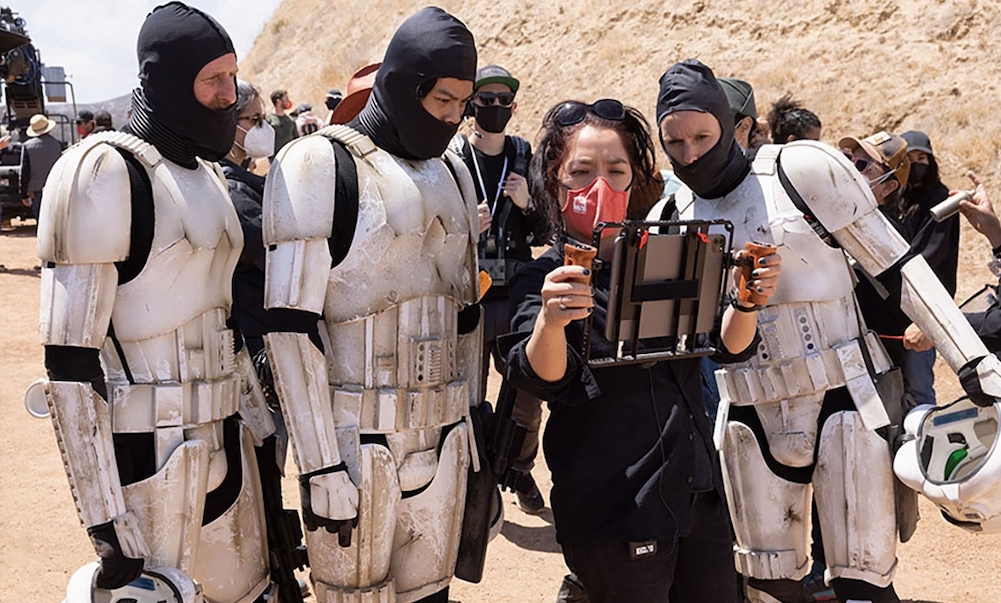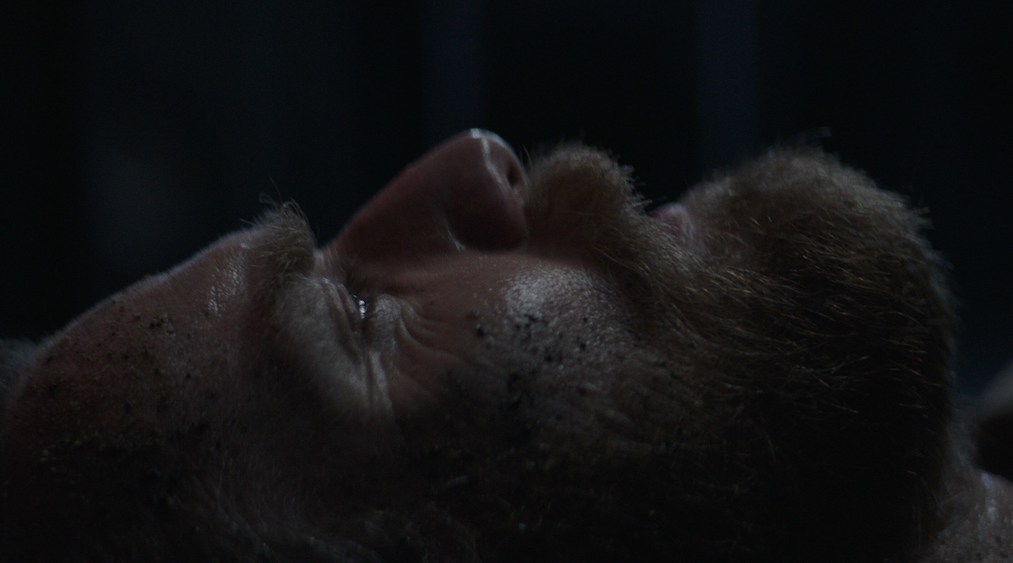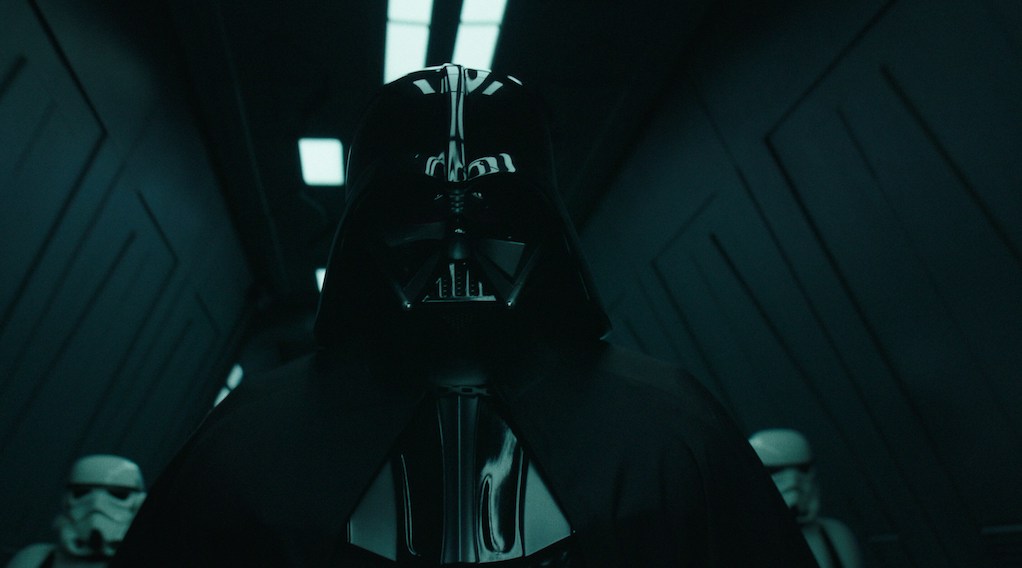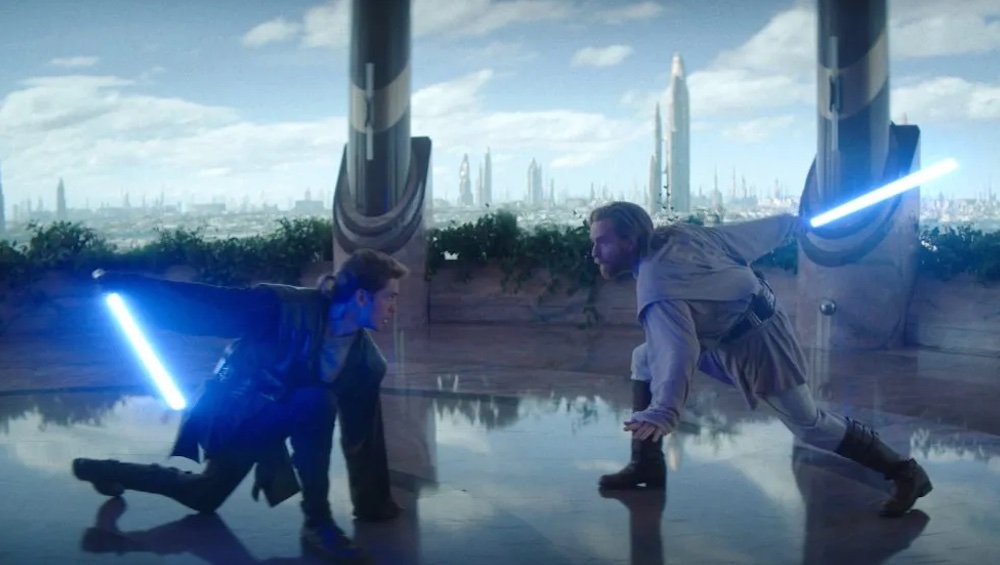
Director Deborah Chow had to tell a story with a lot of history and, arguably, even baggage. By this point in Star Wars franchise, how does a storyteller continue to not only engage but excite millions fans and viewers? For Chow, she didn’t want to pull that off with wham-bam action or all the digital jazz at her disposal.
As she told us, it was about faces.
With Obi-Wan Kenobi, intimacy was the key ambition. She wanted to show pain behind the eyes, not just the pain behind hits and tumbles. With Ewan McGregor back in the titular role, she wanted audiences more up close and personal to the character than ever before in her Emmy-nominated six-part miniseries.
Recently, the filmmaker, who also worked on The Mandalorian, took the time to talk to Below The Line about her acclaimed vision Obi-Wan Kenobi and how to tell a new story about the past.
Below the Line: Just to go a bit back in time, I’ll just say right before this interview, I watched [your short film] Daypass.
Chow: Oh, my God. How did you even find that? [laughs]
BTL: A quick google search. It’s charming.
Chow: Oh, God. It could be edited to be about five minutes shorter, don’t you think? [laughs] I go back and watch, and I’m just like, “Oh, my God. It’s so painful.” I was trying to do Jim Jarmusch meets Tim Burton, those were my idols back then. That’s what I was going for. Actually, that was my first proper short when I was in film school, but the very first short I’ve ever made was a take-off on The Cabinet of Dr. Caligari. Looking back, I’m like, “Oh, my God. No wonder I ended up doing all zombies, and monsters, and robots.” [laughs]
BTL: [laughs] With Obi-Wan, it’s the biggest canvas you painted on as a filmmaker. Were there certain things you’ve been waiting a long time to get to do visually that you got finally to achieve here?
Chow: Yes. One thing coming into the whole Star Wars universe, even with Mandalorian, is you just have the resources, and you have the support of ILM, and we were doing the technology. Also, I loved The Muppets growing up, and getting to do creatures, just getting to do all these things, and actually do them with the full support of the company, it was amazing to be able to do that. It’s funny, going from Day Pass where you’re like, “Oh, my God. A jib arm? That’s a gigantic deal.” You know what I mean? You’re doing anything that seems crazy and amazing. Doing that opening in that short felt like, “Oh, this is bananas.” Then as you move on, you just want to keep going. Even on Obi-Wan, you’re like, “Oh, I wish I had this.”
BTL: As a fan of The Muppets, what did you really want to be practical and tangible on set?
Chow: I think at the end of the day, for me, at least from everything I’ve done, it comes down to, do you care about what’s on-screen? Really, for me, a lot of it just comes down to emotion and the performances. Whether you’re doing something small or you have a big canvas, if it doesn’t have that, it doesn’t work for me.
At the end of the day, I think it all came down to in the show, their faces. I think that’s probably the most profound moment in the show. It’s interesting, it’s really humbling to just always remember at the end of the day, no matter how many toys you have, it’s all going to come down to just the story and the performances. It’s their eyes, the whole show is that in their eyes.

BTL: Out of all the recent Star Wars projects, this one tapped into some of George Lucas’ early inspirations, like Akira Kurosawa. There is the lone figure, but often, it’s there in the atmosphere. Did you often think about, not only George Lucas’ work, but his influences?
Chow: We definitely were because one of the tricks of this is that– also because if you look at the order chronologically, you have everything shot, it’s all out of order. Technologically, George was always pushing the envelopes. There’s so many different changes going on. We wanted to create something where it wasn’t going to feel like it didn’t make sense within the canon, especially when you’re going to things like the Lars farm. You’re going to things that people have seen, and you’ve seen George do it. We’re trying to make sure that it felt visually, and stylistically it made sense within the rest of his work, but also trying to make sure that it also had its own voice.
That was always the challenge of it, is trying to have it if you sat down and watch all the movies, that it’s not going to feel like it doesn’t fit with them, but also making sure that it doesn’t feel like we’re also trying to copy 1970 or something.
BTL: How is that balance? It has to feel like Star Wars, but you also wanted it to be new at the same time, right?
Chow: It’s really tricky. In some places, I think we really succeeded, in some places, we probably didn’t. It’s very difficult getting that balance. With Mandalorian, it was much easier because we weren’t carrying legacy characters, so it was new characters and whatnot. There wasn’t as much weight coming with it or legacy coming with it.
This one is tricky. We’re taking two of the most iconic characters. They’re in the middle of two epic trilogies, and we’re trying to tell a story in the middle. It’s difficult to walk that line. I think that was the biggest challenge of the whole show, honestly, was trying to respect the canon and the legacy of it all, but also try to create something new.
BTL: Of course, there are lots of fans, but the fan that matters most is you. What did you really want to see in a Star Wars story?
Chow: I think with this one, honestly, if you told me way back when I was doing Daypass that I was going to end up staying on set directing Darth Vader, I don’t know how that happened. It’s amazing. You have this moment, he’s twice my size, and you’re just like, “That’s Vader.” Stuff like that is mind-bending when you get to do it.
Given what the show is about and given the nature of what it was about, I think the biggest thing was that relationship between the two guys, and it obviously goes between all of the movies, I just wanted to make sure that it felt authentic, and it felt truthful, and it felt like it worked, that it was natural to everything else in the big story that George was telling. For me, the most important thing is to try to get that emotional honesty that these characters are still the same people and you can feel the correlation between the two trilogies.
BTL: When you introduce Darth Vader, how careful do you have to be in how you shoot and light him?
Chow: Oh, incredibly careful. Particularly, Ewan is so easy because you put a camera on him, and he’s always doing so much. He just brings soul. There’s always this depth and soul in him. Someone like Vader, it’s so tricky because you need to retain that power, and you need to retain the mystery.
In a lot of ways, I’m so glad I did Mandalorian first because actually having done all that time trying to direct somebody with no eyes, no face, and realizing how important a gesture was, and understanding the tiniest little thing can convey so much about their inner life. With Vader, having done Mandalorian, I started that very early and started that process of making sure that the suit was correct, making sure– and it’s not easy, that suit to wear.
For me, on all aspects of someone like that, you have to be very careful how you shoot him. You can’t diminish him in the frame. You want to give him power. I think also he’s a character where you always want to be left wanting more, where you want an insight into how he’s feeling, but you don’t want too much. You need a little bit of mystery with Vader. You don’t want to unveil him. There was a lot of focus going into things like that.

BTL: Didn’t you say your first short film was a Dr. Caligari riff?
Chow: It was.
BTL: Okay, so when you’re on set with the silent movements of Darth Vader, did your mind go back to that and be like, “Oh, I got this. I did a nod to Caligari once”?
Chow: [laughs] I don’t know that I would say that my first short ever made me feel like, oh, I got Vader, but I would say in the history of the trajectory, definitely, but the first real scene in the show is… There’s a scene in episode three where he’s walking down the street and he’s trashing villagers. That, for me, honestly, as a director, I love doing that sequence because there’s almost no dialogue in it.
The whole thing is building this psychological and emotional connection between these two guys, and it’s this cat and mouse and it goes into horror a bit. Frankly, for me, I totally dug it where it was getting to see him rage like that. Also, one of the things that was so cool is this is Vader in his prime and it hadn’t really been explored in live action. Getting to see him full power and darkness was awesome, but it really was that where you’re like, “I need to do this visually. I’ve got to build this entire thing just as a visual story.”
BTL: You studied film at Columbia, right?
Chow: I did, yes.
BTL: Was there a lot of studying silent films? How important would you say an education in silent films is for something like Star Wars?
Chow: I think it actually is a great basis. I always go back to Kurosawa and Westerns, and actually both of those tropes, and particularly Westerns, there’s not much dialogue. You are doing a lot visually, but I think silent films also, because especially when you’re dealing with– I think for me, when I came into the Star Wars world, it almost goes back to this very primal storytelling where. It is the westerns and samurais where it is image-based and it’s action-based, where it’s not people just sitting talking for three pages. It has to work on a very emotional and active level, which is a great lesson to have to push as a director. I.
BTL: Any specific westerns that influenced you on Obi-Wan?
Chow: When I went into Mandalorian, I re-watched so many things and had this whole basis. I was lucky that I’d already done that before I came into Obi-Wan. Westerns, it was all the classics, and so many of the Westerns are connected to the samurai movies and all the John Wayne stuff. You’re going through everything. Also, they build tension so well in a way. That’s something that I really admire, that you’re building a standoff or you’re building tension. I would look back to a lot of that stuff. When I came to Obi-Wan, I already had all that in me.
Also, the other thing I’d been referencing a lot was Hong Kong action movies. Basically, when I was doing Mandalorian, the baby felt very Hard-Boiled to me, so I was looking at a lot of John Woo running around in that world. This one, I think Obi-Wan, it’s less of a John Woo thing going on, but I felt that I looked at things like The Assassination of Jesse James, The Proposition, where it’s Western, but you’re expanding a little bit more into the poetic soul, which to me is Ewan McGregor.
BTL: What about Eastwood?
Chow: For sure. The Spaghetti Westerns, honestly, and all the Sergio Leone stuff, it’s hugely influential. I think we’re all copying. [laughs] I feel we’re all copying his shots, even so, but there’s somebody who understands tension. When I think of so many of those movies, I think of the eyes, and I think of the standoff just between those two characters’ eyes. Can I remember the exact plot? Probably not, but I’ll remember those standoffs and those moments. That’s a direct correlation taken as to what we were doing on Obi-Wan.
BTL: My last Western question, as someone that started off their career referencing Jim Jarmusch, any Dead Man influence?
Chow: Yes and I would put– it’s so funny because I love Jarmusch, but I would put Dead Man into– that would go into the more modern, the emotional, and the poeticness of that storytelling, where it is doing the Western tropes, but it’s got a soul to it in a very poetic way.

BTL: For Vader’s voice, what qualities were really key to the soul? How’d you and your sound team want to help craft drama in his voice alone?
Chow: Creating Vader’s voice, and I was so fortunate, honestly, to have Sky Sound and to have Matt Wood in that team because he worked on the prequels. I think the biggest thing is we’re obviously going backwards in time, so we need Vader to sound younger and we need him to sound more aggressive and passionate. He is more in the game at this point. Then when we did the mixture in the scene in the last episode, that was something we spent an entire day just doing that one scene. I always felt that that was going to be the most pivotal scene and that was definitely the scene we did not want to screw up.
It was really about finding that, I think that was the main thing for us, is that this was a character where there was still some Anakin in there, you know what I mean? We’re trying to tie it together to go, this is the bridge to go, this is Hayden in Vader and what’s happened in these 10 years to bring him, he’s in between these two places.
It was tricky. Literally, we would do word by word and breath by breath, his voice apparatus of how we used it. When he starts to break down, it’s about trying to find almost the frailty, the human vulnerability inside that monster.
BTL: For the lightsaber battles, it’s like we keep seeing every individual filmmaker’s interpretation of what they should be. For you, what do you think a lightsaber battle should communicate and how it should move and how it should feel?
Chow: For me, whenever I’ve done action, and I’ve been fortunate to be able to do a bunch between this and Mandalorian, I just always want to make sure– I love action and I love just honestly seeing people kick each other’s ass and it’s fun and exhilarating, but truthfully, when I design it, what I’m looking to do is I want it to be character-driven and I want it to have shape. What Jonathan [Eusebio] and I, who is my amazing stunt coordinator, did is we started basically with a structure, and it was a five-act structure to that fight in Episode 6 to go, what are the beats of this?
If you just take it emotionally, and from a storytelling perspective, Vader’s winning here and then what turns it is… Whenever I watch action sequences, when I care the most and when I’m invested the most is when it feels like there’s something at stake for their characters and you’re really, really in it. That was the biggest thing I was trying to do, and it was a very uncommon structure of a fight because nobody could win. We had a big U-turn at the end where all of a sudden we’re going to the cracked mask scene. It was a very different type of fight. Nobody’s going to die and nobody’s going to win.
BTL: As a filmmaker, are lightsabers battles also more enjoyable because they’re more intimate action sequences?
Chow: Absolutely. I think for this show and this fight, we were not doing some massive blowing up the Death Star Galaxy thing. Our show is about those two guys, the fight between them. Also, I was fortunate Ewan did 98% of all the stunt work. There’s no stunt person in there. It’s him doing it. To me, if the show is going to work, it’s those guys, and it is very personal because you’re right in there and it’s an extension of them and it’s an extension of their force inside of them and their souls and their personalities.
It’s very different from doing something like pew pew in a gun battle. Mando was like, I did this huge thing on the street, which was crazy fun to do, but it was in a totally different tone. This fight was personal and we were trying to make it uglier and grittier and to show these guys it’s going right to the jugular with these two.
BTL: Now I have to ask, when are you going to make a 90-minute, lean and mean, meat and potatoes kickass action movie?
Chow: I would totally love to do that, honestly. [laughs] Maybe when the strikes are over. Believe me, I’d love to do something like that. For some reason, I don’t know why, but I’m always attracted to these big fantasy worlds but these big characters that are very tough, but then I like trying to find the emotion in them. I like that tough guy that you’re trying to find the heart in.
The Emmy-nominated Obi-Wan Kenobi is now available to stream on Disney+.





